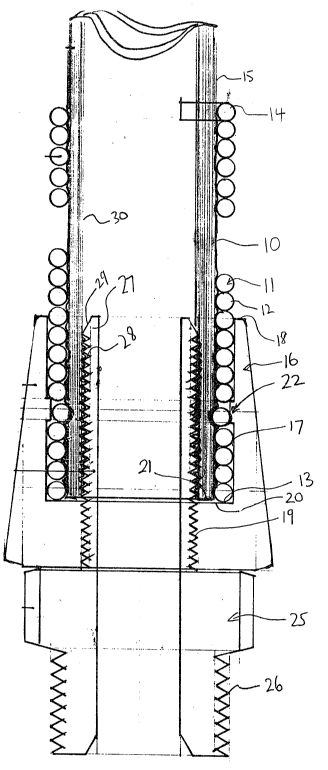Some of the information on this Web page has been provided by external sources. The Government of Canada is not responsible for the accuracy, reliability or currency of the information supplied by external sources. Users wishing to rely upon this information should consult directly with the source of the information. Content provided by external sources is not subject to official languages, privacy and accessibility requirements.
Any discrepancies in the text and image of the Claims and Abstract are due to differing posting times. Text of the Claims and Abstract are posted:
| (12) Patent Application: | (11) CA 2105927 |
|---|---|
| (54) English Title: | HOSE CONNECTION |
| (54) French Title: | RACCORD POUR BOYAU |
| Status: | Dead |
| (51) International Patent Classification (IPC): |
|
|---|---|
| (72) Inventors : |
|
| (73) Owners : |
|
| (71) Applicants : |
|
| (74) Agent: | ADE & COMPANY |
| (74) Associate agent: | |
| (45) Issued: | |
| (22) Filed Date: | 1993-09-10 |
| (41) Open to Public Inspection: | 1994-03-11 |
| Availability of licence: | N/A |
| (25) Language of filing: | English |
| Patent Cooperation Treaty (PCT): | No |
|---|
| (30) Application Priority Data: | ||||||
|---|---|---|---|---|---|---|
|
-9-
HOSE CONNECTION
ABSTRACT
A coupling for a flexible soft hose for example for a foam supply
duct of a car wash includes a helical spring wrapped around the end of the
hose with a spring on the end of the hose inserted into a sleeve member and
abutting a shoulder within the sleeve member. A threaded insert member is
then engaged through the sleeve member to the inside of the hose thus
squeezing the hose outwardly to engage the inside surface of the spring. A
swivel coupling can be provided on the male insert member using a replaceable
O-ring and clip ring mounting.
Note: Claims are shown in the official language in which they were submitted.
Note: Descriptions are shown in the official language in which they were submitted.

For a clearer understanding of the status of the application/patent presented on this page, the site Disclaimer , as well as the definitions for Patent , Administrative Status , Maintenance Fee and Payment History should be consulted.
| Title | Date |
|---|---|
| Forecasted Issue Date | Unavailable |
| (22) Filed | 1993-09-10 |
| (41) Open to Public Inspection | 1994-03-11 |
| Dead Application | 1999-09-10 |
| Abandonment Date | Reason | Reinstatement Date |
|---|---|---|
| 1998-09-10 | FAILURE TO PAY APPLICATION MAINTENANCE FEE |
| Fee Type | Anniversary Year | Due Date | Amount Paid | Paid Date |
|---|---|---|---|---|
| Application Fee | $0.00 | 1993-09-10 | ||
| Reinstatement: Failure to Pay Application Maintenance Fees | $200.00 | 1996-03-01 | ||
| Maintenance Fee - Application - New Act | 2 | 1995-09-11 | $50.00 | 1996-03-01 |
| Maintenance Fee - Application - New Act | 3 | 1996-09-10 | $50.00 | 1996-09-10 |
| Maintenance Fee - Application - New Act | 4 | 1997-09-10 | $50.00 | 1997-09-03 |
Note: Records showing the ownership history in alphabetical order.
| Current Owners on Record |
|---|
| WIEBE, JACOB |
| Past Owners on Record |
|---|
| None |